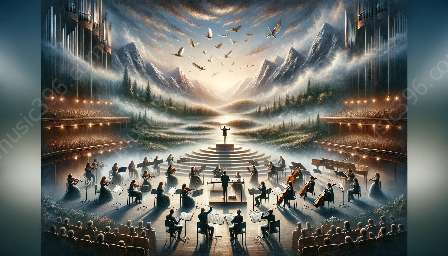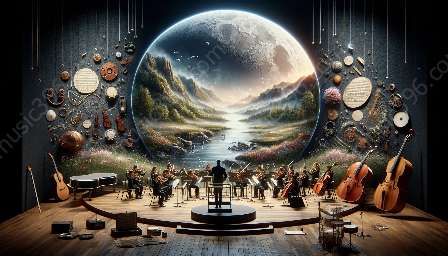Counterpoint, in conjunction with harmony, has played a significant role in shaping the development of musical form and structure. This topic cluster explores how counterpoint interacts with harmony and its impact on music reference.
Understanding Counterpoint and Harmony
Counterpoint and harmony are two essential elements of music composition and performance. Harmony focuses on the simultaneous sounding of different musical notes to create chords and chord progressions, defining the vertical aspect of music. On the other hand, counterpoint deals with the combination of two or more independent melodic lines, emphasizing the horizontal aspect of music, creating a rich and complex texture.
The Influence of Counterpoint on Musical Form
One of the profound ways in which counterpoint influences the development of musical form is through the creation of thematic material. Counterpoint allows composers to intertwine multiple melodic lines, exploring the interaction of voices and creating intricate melodies that become integral to the structure of a composition. By developing contrapuntal techniques, composers can construct complex musical forms such as fugues, canons, and inventions, where the interplay of multiple voices contributes to the overall structural integrity of the piece.
Additionally, counterpoint enables composers to modulate and develop musical themes, providing a framework for the transformation and variation of melodic material within a composition. Through the manipulation of contrapuntal lines, composers can guide the progression of musical motifs, leading to an organic evolution of form and structure. This dynamic aspect of counterpoint contributes to the coherence and unity of musical compositions, allowing for the development of themes in a compelling and engaging manner.
Interaction with Harmony
Counterpoint and harmony are not mutually exclusive elements of music. In fact, they often interact and complement each other to enhance the overall musical experience. Within contrapuntal compositions, the harmonization of individual melodic lines significantly influences the perceived emotions and moods, contributing to the expressive depth of the music. The intricate interplay between counterpoint and harmony allows composers to create intricate textures and rich layers of sound, adding depth and complexity to the musical form.
Furthermore, the relationship between counterpoint and harmony extends to the structural organization of musical compositions. Harmonic progressions often serve as a foundation for contrapuntal development, guiding the movement of melodic lines and shaping the overall structural integrity of a piece. Through the fusion of counterpoint and harmony, composers can craft compositions that exhibit both captivating melodic interplay and cohesive harmonic progression, resulting in intricate and unified musical forms.
Impact on Music Reference
The influence of counterpoint on the development of musical form and structure extends to its impact on music reference. By incorporating contrapuntal techniques, composers establish a musical dialogue with historical and contemporary references, building upon established conventions and expanding the creative possibilities within a particular musical genre or style. Through the utilization of contrapuntal elements, composers pay homage to the rich traditions of music while simultaneously innovating and pushing the boundaries of musical expression.
Moreover, the incorporation of counterpoint in musical compositions creates opportunities for intertextuality, allowing composers to reference and reinterpret established musical themes and motifs within their works. This engagement with music reference enriches the artistic landscape, fostering a deeper appreciation of musical heritage while encouraging creative reinterpretations and reimaginings of familiar musical elements.









































